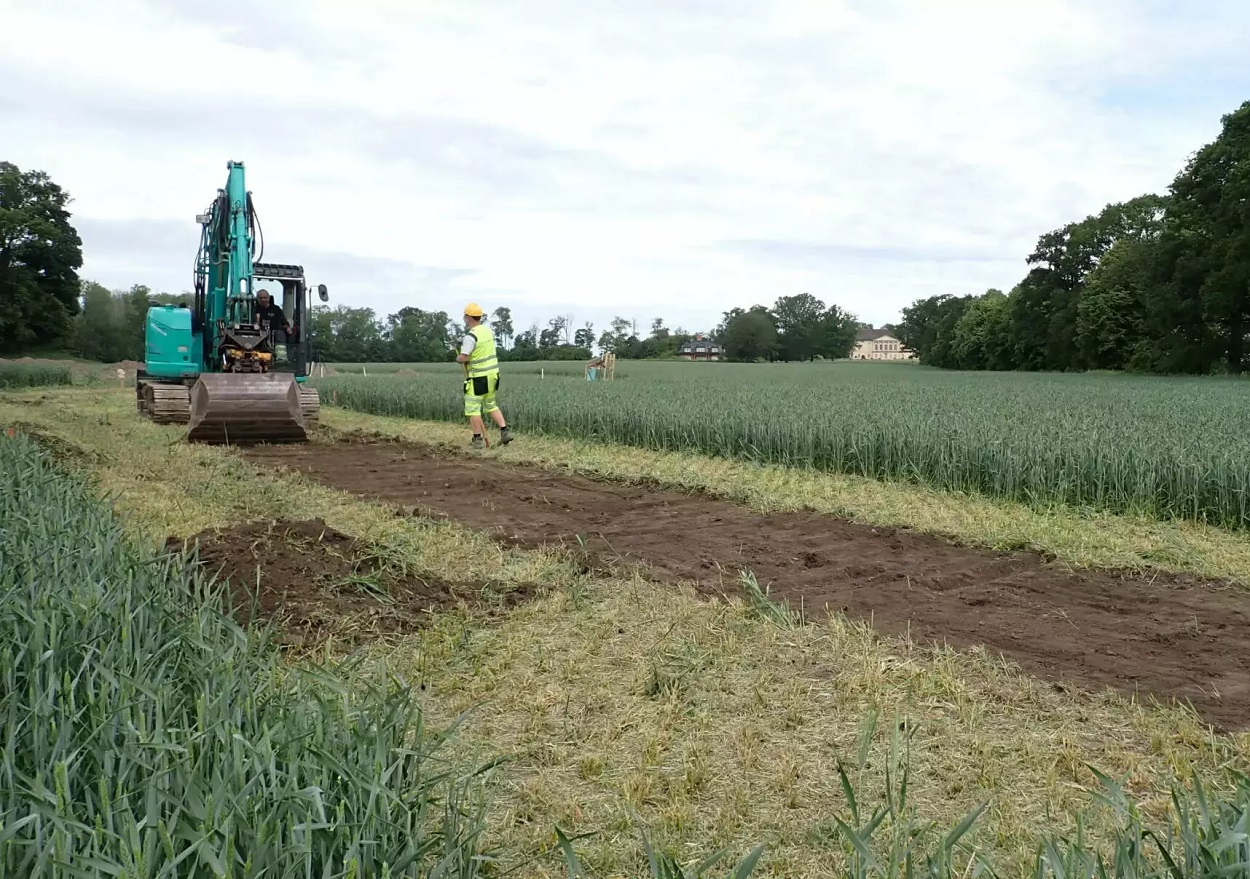Archaeologists have discovered a Viking ship burial northwest of Tønsberg in Vestfold county, Norway.
In 2018, a metal detector survey conducted in a field at Jarlsberg Hovedgård uncovered scattered traces of iron rivets. This discovery prompted a study using ground-penetrating radar, suggesting the potential presence of a burial mound.
Jarlsberg Hovedgård is the family seat of the Wedel-Jarlsberg family and the Count and Countess of Jarlsberg, who historically led the County of Jarlsberg.
Agricultural activity has obliterated all traces of the mound, scattering the rivets across the surface or embedding them in the shallow soil down to plough depth.
Recent excavations by archaeologists from the University of Oslo have now confirmed that the mound once contained a Viking ship burial. Christian Løchsen Rødsrud, said: “We can now say for certain that yes, here lie the remains of a Viking ship. This discovery adds a new landmark to the map, once a significant site during the Viking Age,” he says.
Two weeks of archaeological investigations have uncovered rivets suggesting the presence of a large ship, comparable to those found at Gokstad and Oseberg. Approximately 70 rivets have been unearthed, with dimensions indicating they held together wooden planks up to 2.5 centimetres thick.
Excavations also found horse crampons, suggesting that they were deposited as grave goods, a common theme in Viking Age burial customs. “Finding horse crampons in the material suggests that the rest of the grave goods are also in the field,” says Rødsrud.
Who was buried in the ship is open to speculation.
One theory suggests that the site could be the grave of the Viking king Bjørn Farmann – son of Harald Fairhair. According to the sagas by Snorri, Bjørn was killed at the Sæheimr estate by his brother, Eric Bloodaxe.
Header Image Credit : Museum of Cultural History / University of Oslo
Sources : sciencenorway.no





